Engine Structure & Operation
Engine Structure
If you have ever looked under the hood of a modern passenger car, you already know that today's automotive engines are hidden under covers, housings, wires, hoses, and complex control systems that make it impossible to see the engine's inner workings (structure).
To make this structure easier to understand, we have presented a drawing to show the basic moving parts of a modern passenger car engine.
Place the mouse cursor on each of the component names.
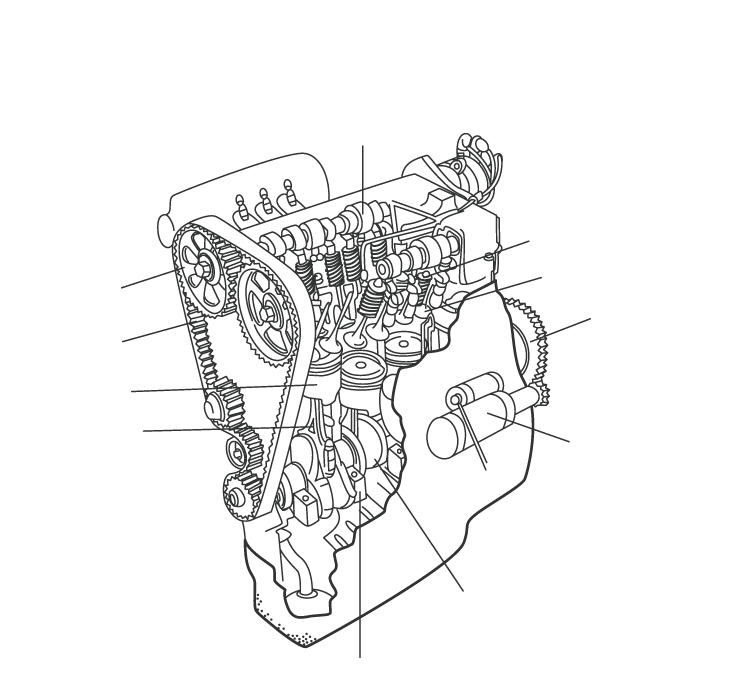
-
Timing gear
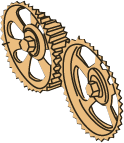
-
Timing belt
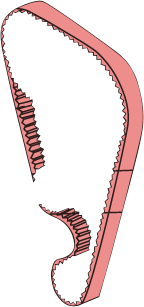
-
Camshaft

-
Piston
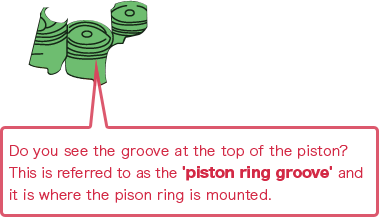
-
Connecting rod

-
Crankshaft
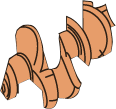
-
Bearing cap

-
Starter motor

-
Flywheel

-
Valve

-
Valve spring

Cited from"Enjin ha kounatteiru エンジンはこうなっている" (Grand Prix BOOK PUBLISHING CO.LTD.,)
Engine Operation
We will begin our explanation of basic engine operation by looking at the four-stroke working cycle of the engine. These four strokes are usually called(1) the intake stroke, (2) the compression stroke, (3) the combustion (expansion) stroke, and (4) the exhaust stroke.
Let's take a look and see how a typical four-stroke engine operates.
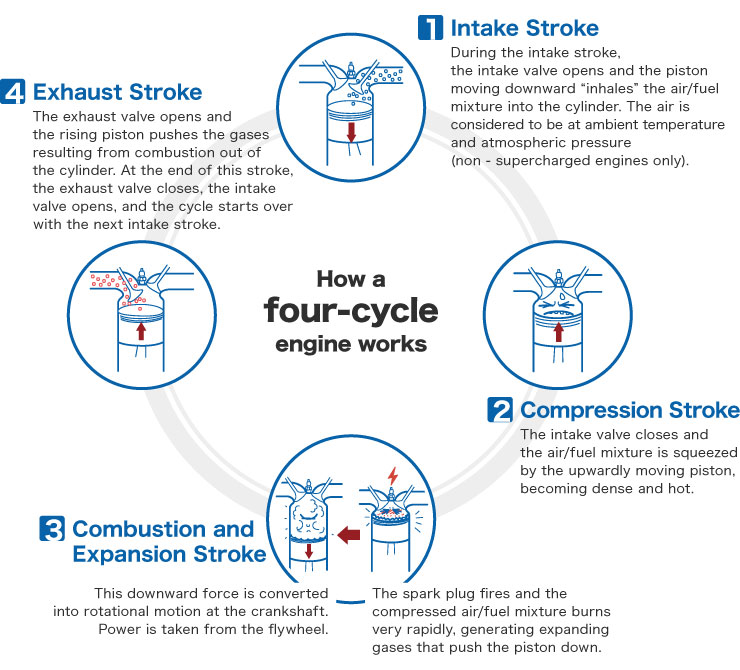
Cited from"Enjin ha kounatteiru エンジンはこうなっている" (Grand Prix BOOK PUBLISHING CO.LTD.,)
The piston goes up and down twice (four strokes) during the cycle, sucking in ambient air (mixed with fuel), and then burning it to produce expanding gases that drive the piston down, producing engine output. The resulting gases can reach temperatures of over 800.
Now we are ready to look at the piston ring and to learn about its important function in the engine.






